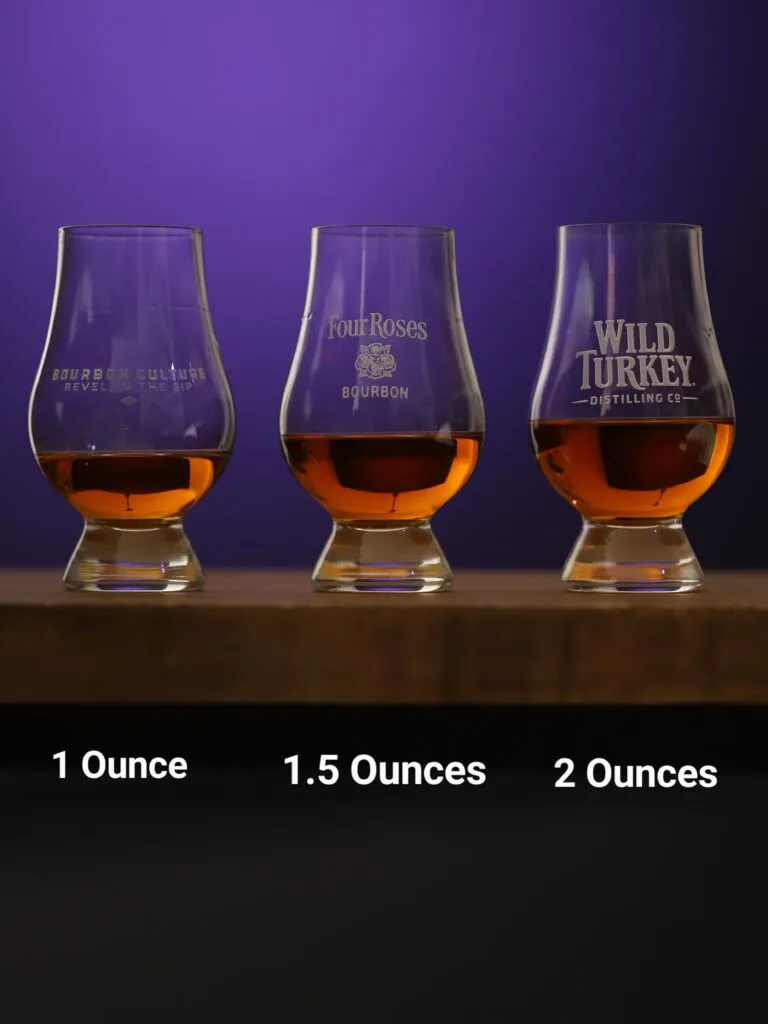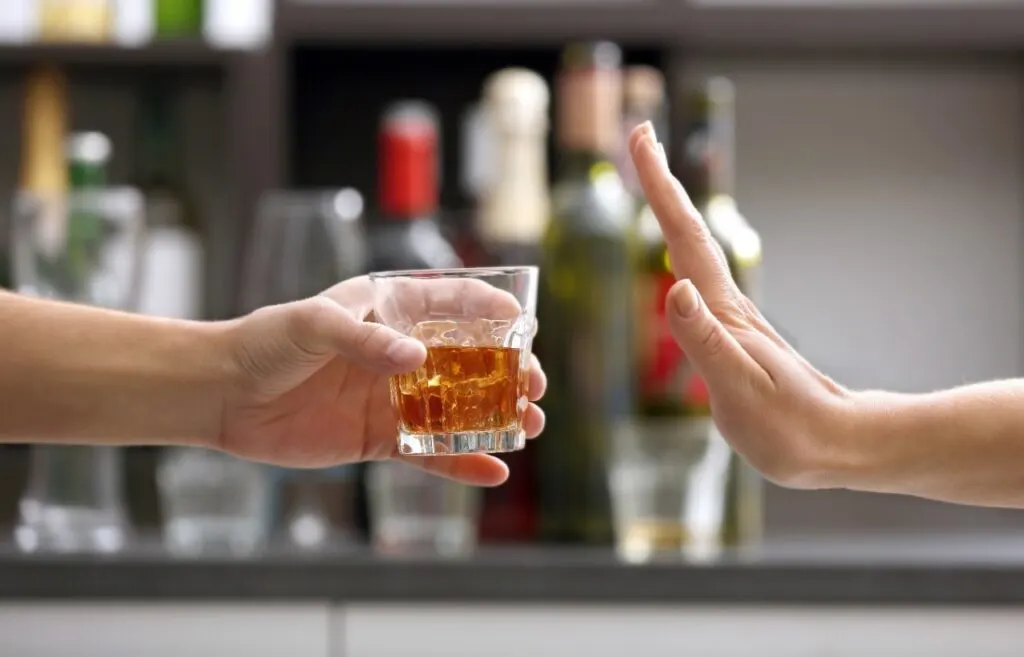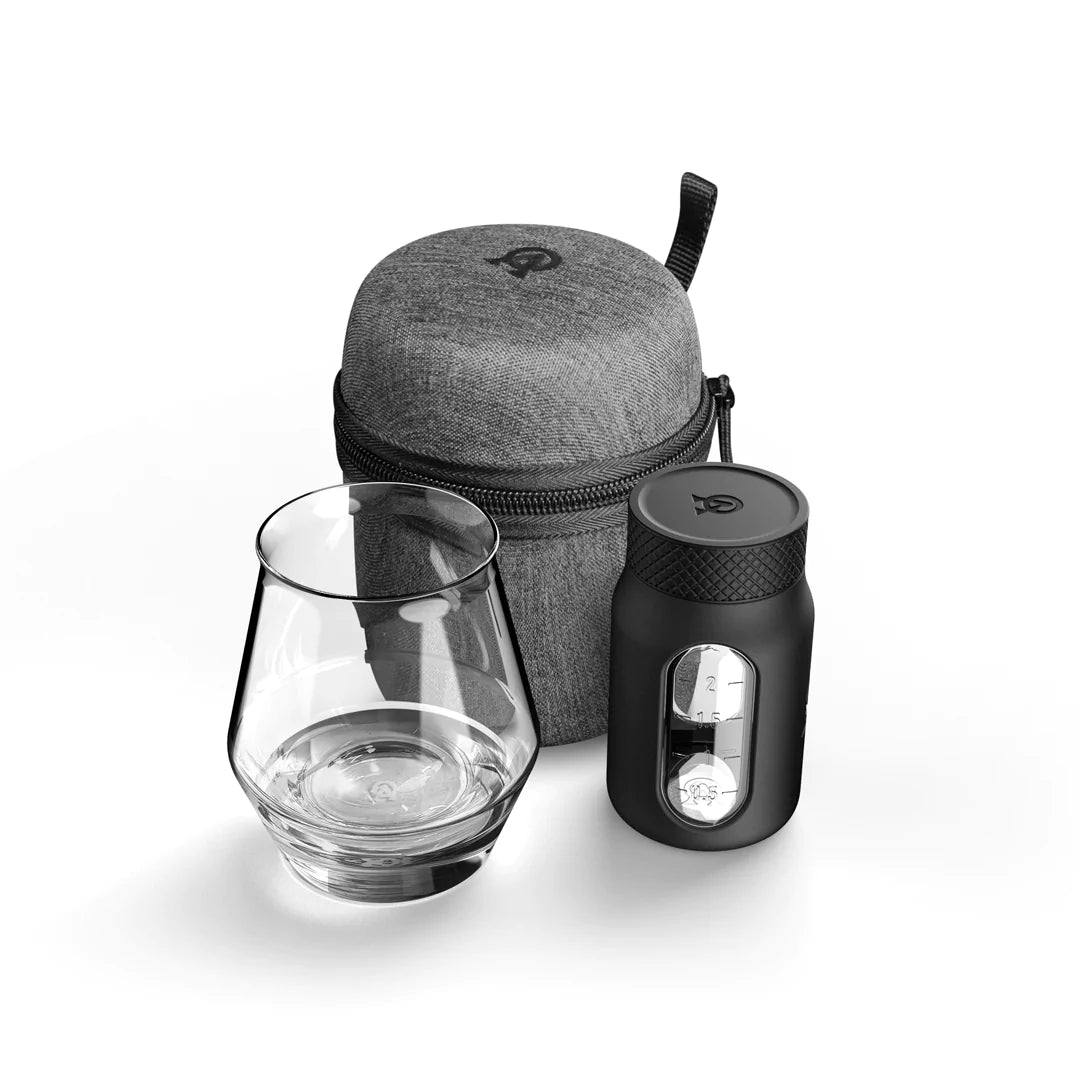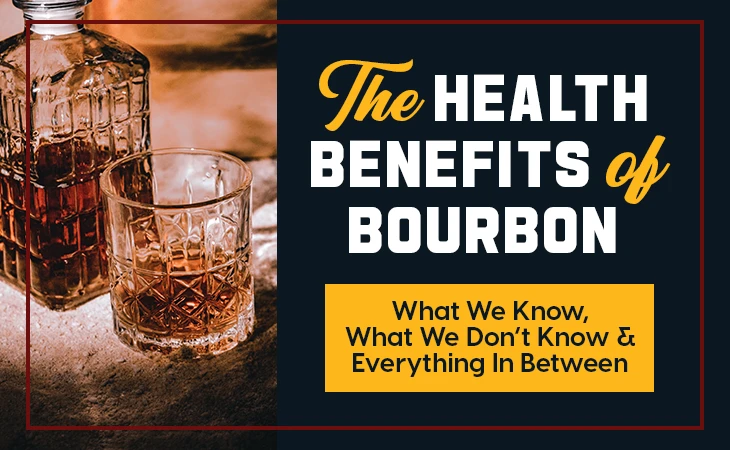| Don't like ads? | No ads |
If it’s your first time visiting The Bourbon Culture, then welcome! Drinking bourbon and rye whiskey is what we love to do and it’s what we love to write about. How could we not? With so many varieties out there with endless flavors, it was love at first sip.
The growing popularity of bourbon has seen people from all walks of life discovering the wonders of what happens when fermented grain gets distilled and aged for long periods of time inside oak barrels. What could be better? How about if there were some health benefits that went along with this magical drink?
The truth about drinking a glass of bourbon for the health benefits it offers is about as clear as mud. For decades now, producers of all kinds of alcoholic beverages (but specifically, the wine industry) have touted the potential health benefits of drinking in moderation.
They have even gone as far as funding marketing campaigns saying as much or establishing their own research groups that publish results that are favorable. You may have noticed every now and then that national news channels pop up with a short 30-60 second story on the health benefits of alcohol in moderation.
They usually fit them in nicely between feel-good stories and the newest updates on gas prices. These carefully curated campaigns are designed with one goal in mind: to reassure the public that drinking alcohol in moderation is actually good for you.
Let’s get real about alcohol consumption
“Hey wait a minute Mike, what’s with the mood you’re casting so early into this article?” some of you may be asking yourself. What, you thought that just because we write about bourbon and rye whiskey that we were automatically going to go to bat for the spirits we love?
The truth is that while we may love (and occasionally overindulge) on bourbon from time to time, we aren’t blind to certain realities of it. In fact, if you’re scouring this article for how exactly bourbon whiskey or rye whiskey are better for the heart or how lower stress levels can lead to a longer life, then you may want to look elsewhere.
But before you do, consider this. How has drinking bourbon or any type of alcoholic drinks resulted in improved sleep, higher mental functioning or improved numbers during your doctor visits? If anyone who is reading this article right now can genuinely self-reflect on their general well-being from before to after they started drinking bourbon in earnest, and say that they feel and look healthier, then stop reading right now now and refer to our Top 10 Whiskies of 2022 list for what you need to go buy.
For the rest of us, we are probably aware that enjoying, and maybe over-enjoying bourbon from time to time has resulted in some weight gain. Maybe increased tiredness or poor cognitive performance the day. That could be because you were going to stop at 2 drinks and had 4 instead. We’ve all been there.
Skin issues, lethargy and heartburn may seem like temporary inconveniences that you can live with. Maybe you’ve noticed some changes in your mood like lack of interest in things you were once interested in or temper flares. Too much bourbon (or too much alcohol in general) doesn’t just effect our physical bodies, but our minds as well.
Maybe you’re thinking to yourself of returning to more moderate forms of drinking or doing “Dry January.” I know many of us have convinced ourselves that the path to getting back on the right track is an arms-length away.
Moderate Alcohol Consumption is different for everyone
The key issue here is with the word “moderation.” By itself, moderation is more like a parameter and not a precise measurement. “In moderation” to what, exactly? The alcohol industry loves to hear these various studies drop the word because it’s so ambiguous.
And when things are ambiguous, people feel like they are probably making the right call. Everyone experiences personal consumption differently – just like everyone believes that their judgment calls are always the right call. I suspect most people view moderation along the lines of “Not overdoing it.” In reality, there are many definitions of moderate alcohol intake. Not only are they different from country to country, they’re constantly changing.
Recently, a lot of studies relating to safe consumption guidelines of alcohol were reexamined. This time around, they took the previous data and accounted for “abstainer bias”—the idea that some people don’t drink because they have health or prior substance-abuse issues.
Once that section of the population was plugged back into the old data, they found that previous conclusions of the health benefits of whiskey were completely wiped out. The numbers now pointed to virtually no benefits at all associated with even a moderate intake.
Modern Day Bourbon Drinkers
Ever since the bourbon boom hit America in earnest starting in the 2010’s, the main complaint among enthusiasts is that they can’t find allocated bourbons. This is followed with the hope that the massive investment by distilleries to expand production of bottles like Pappy Van Winkle will make it available on the shelves again.
While I tend to roll my eyes at a thought like that, it may not be too far behind. I forsee a dip in overall bourbon consumption in the United States in the next 20-25 years. The reason is because of new research polls showing that the generation of 15-30 year old’s are drinking less than ever before – with most outright shunning alcohol. This is because, like cigarettes a generation or two prior, the health detriments became too obvious to overlook.
This younger generation has a better understanding of their health and is more likely to read the reports that alcohol consumption offers no increased health benefits, only risks. And with personal health and the personification of healthy lifestyles growing increasing in popularity, it’s becoming harder to convince young people to drink more.
To them, the increase in the quality and quantity of life is worth it to abstain.

All of this means that the modern day bourbon drinker is more likely to be middle-aged. Sure, there are young people that still get into it, especially cocktail culture, but the trend we’re seeing are older men and women with lots of disposable income sponsoring this boom.
It turns out that older people (I’m talking about people older than 40) may be the only ones who could have any semblance of health benefits from drinking bourbon.
That’s because the studies that show no benefits to younger people drinking still acknowledge that 40+ year old’s drinking alcohol in moderation might receive slight benefits along the lines of reducing the risk of cardiovascular disease, stroke, and type-2 diabetes.
But there are so many asterisks next to those benefits that it’s amazing that anyone even fits into those guidelines at all. For instance, these benefits only apply to you if you’re already in good health.
For instance, if you already have been diagnosed with high blood pressure, then the benefits of drinking go right out the window. That might seem obvious to you, but with the way the media gives us half-stories about the benefits of alcohol, it isn’t so obvious to others.
After all, your car is less likely to break down if it has been well maintained compared to one that has skipped maintenance appointments, right?
Furthermore, the data shows that drinking moderate amounts of bourbon when you’re older is only beneficial if your ethnicity shows a greater likelihood of heart attacks, heart failure, stroke and diabetes but you have not currently been diagnosed with them.
That part is confusing because if you’re an Indian man, for example, who may be more prone to diabetes because of your ethnicity, yet you don’t have it by age 45, is drinking 2 servings of alcohol per day really going to make that risk slightly lower?
Or will it be a lower risk because you won the genetics lottery where you were less susceptible? What this all boils down to is the fact that people over 40 typically have less risk for abusing alcohol so easily and younger people are more prone to.
This makes sense if you think back on the dumb stuff you did when you were younger that you would never do after a certain age. Can you remember back before your body started to tell how it really felt?
How the bourbon you are drinking may not fit into the guidelines of recommended serving size
Under current guidelines, males should drink no more than 2 drinks per day. Females, due to their smaller average size, smaller livers and naturally higher percent of body fat when compared to men (more on that later) are only recommended to have 1.
But what is a “drink” as it is defined? You probably already know the answer to that. Traditionally, it’s been defined as 12 ounces of beer at around 5% ABV, 3.4 ounces of wine at 13% ABV or 1 ounce of distilled spirits at 40% ABV.
Each of those quantities work out to contain roughly 10 grams of pure alcohol. Another point I’d like to bring up with how confusing these numbers get. When I did my research for this article, I found about 50% of articles quoting the serving size of distilled spirits as one ounce. The other 50% said the serving size of distilled spirits was 1.5 ounces. So which is it?
Also, I’m talking about American data and recommendations. When reading about the suggested serving sizes in other countries in Europe or Australia, a majority say 1 ounce is the serving size. That extra half an ounce is a difference of almost 5 grams of alcohol.
I couldn’t make sense of the disparity. If you go by the the 1.5 ounce recommendation instead of the 1, you are already ingesting 50% more alcohol than is recommended.
And if you think that half an ounce is like splitting hairs, then I must caution you to step back and see the big picture of how that extra .5oz starts to add up very quickly over the days, weeks and months.

If you’re just a novice getting into bourbon whisky, you’ve likely surpassed the stage of drinking 80 proof whiskey. In fact, I’ve rarely reviewed bottles under 90 proof. If I had to guess the average proof of a bottle I review on here, I’d put it at 105. What does that mean for alcohol content? Using the equation that can easily be found on Google, a 105 proof one ounce pour will have 12 1/4 grams of alcohol in it.
A 1 ounce pour of Elijah Craig Barrel Proof Bourbon or Stagg Jr at 130 proof would have a whopping 15.2 grams of alcohol in it. And because I know that my readers are smart, you can do your own math of how that will start to catch up with you based on the knowledge that our the human body metabolize 7 grams of alcohol per hour on average to start seeing the disparity.
I’m also not letting other types of alcohol drinkers off the hook either. As soon as beer drinkers move into craft beer with high alcohol content (like 8-12%) or red wine drinkers realizing how little 3.4 ounces looks in those big fishbowl glasses, moderation begins going out the window. Many times we define moderation by how much we intended to drink rather than actually drank.
Now that our understanding of how much we should be drinking has been thoroughly muddied, how does it leave our bodies? After all, the more time it spends inside of our bodies, the worse. We all know that alcohol will make you drunk, but how is it actually bad for our organs? The reason revolves two enzymes our body makes to break down alcohol.
The first one, ADH, breaks the alcohol molecule down into acetaldehyde (which is toxic and a carcinogen) before the second enzyme, ALDH, finally converts it into water and carbon dioxide. These processes are not instantaneous though. They also don’t happen immediately after each other. There is a significant amount of time that acetaldehyde remains in its carcinogenic stage floating in the blood in your organs.
By the way, our livers aren’t the only organ that can can generate ADH and ALDH. Science has found most organs can create it too. But when it’s organs like the pancreas or brain breaking down excess alcohol, then the real problems begin. Because if those loose carcinogens begin to create cancerous cells that spread, that could result in a future death sentence of the worst kind.
The biggest risk of alcohol consumption – Loss of Control
If you’ve made it this far, then perhaps you’re wondering if there are some things you’d like to change about your bourbon drinking. Maybe it’s time to cut back some or at least re-examine how you’re pouring.
For many people, we’re pouring way too much to begin with. I get it, it’s good stuff but it’s more than we need. And when we pour with a heavy hand, we’re getting a lot of needless calories. Let’s look into the calorie perspective for a minute.
I’ve heard many of my beer drinking friends say they switched from beer to whiskey because they wanted fewer calories. And while that is probably true if they came from craft beer, it should be known that a 1.5 ounce pour of Knob Creek Single Barrel at 120 proof is 146 calories. Even 1.5 ounces of 86 proof bourbon like Evan Williams Single Barrel can be 105 calories.
All of the sudden, those light beer brands who advertise calorie values under 100 aren’t looking too shabby. I’m assuming that most whiskey drinkers may consume 4 to 5 ounces per session which could add up to 500 calories very quickly. So if weight loss is what you are looking for, you are not doing yourself any favors.

The biggest hurdle to reigning in our consumption is the fact that alcohol clouds our judgment while we drink. As I stated before, drinking in moderation for most people boils down to what they plan on drinking versus what they actually do. This means that more bourbon is being consumed at a cost of more calories.
And if you’re restricting your diet so that you can drink more without going over a caloric threshold, then you just end up replacing food that gives you the nutrients you need with empty calories. There are also the people that overeat when they drink, exacerbating the situation more.
To be fair, you should eat before you drink or even during as a way to decrease the amount of alcohol going into your blood. But all of this eating starts to add up on the scale and your activity level drops too.
All of this can result in a snowballing effect that means your health issues can go into a tailspin faster than you realize. This is why any health benefits that may come from alcohol will surely be lost as your weight increases and your physical activity decreases in kind.
I haven’t even gotten into the modern research on drinking and driving, domestic altercations or accidents occurring while inebriated. If I did, this article would swell even larger than it already is.
I like to give my readers the benefit of the doubt though and realize many of you have probably already read some articles on health benefits and risks regarding alcohol in general.
So you’re probably aware of the outside factors to avoid and are looking inwards at your own body. It does bear repeating though – your internal health can still be massively affected if you decide to get behind the wheel or are more prone to attention-seeking behavior while intoxicated.
Please seek the addiction resources in your area if you find yourself doing either.
Final Thoughts
That probably seemed like a lot to cover coming from a person who has (at the time of this writing) 600 bourbon and rye whiskey reviews under their belt. I love the water of life just as much as most of you, but I don’t try to fool myself that it’s some sort of healthy hobby. It’s one that needs to be done in small amounts with an eye towards not overdoing it.
Because whether or not you look at it like I do, a hobby, or as a routine thing you feel like you have to do at the end of the day, the simple fact is that drinking bourbon or any kind of alcohol is not something we should do as a part of a healthy diet.
Do it sparingly and for a good reason. Share a pour of your drink of choice when reconnecting with friends or celebrating achievements.
But please make sure that you’re also being present for life’s moments that give us memories. A glass of whiskey does not have to come first on the long list of things needed for celebrations. Sometimes it doesn’t have to be involved at all. After all, life is short and I want you to enjoy it for as long as possible. From all of us here at The Bourbon Culture, stay safe and be well.
Featured Products
- Neat Traveler

- View Larger
- Description:The Aged & Ore Neat Traveler is a complete travel kit for spirits. We combined our widely praised Neat Glass with one of our 3oz Flight Bottles and housed them together in a custom EVA travel case. Perfect for a night away with your favorite pour. The tie
- Bottle Flight

- View Larger
- Description:The Aged & Ore Bottle Flight is a premium set of 4 custom silicone wrapped glass bottles designed to transport and share samples of your favorite spirits. The flight bottles come in a custom EVA travel case that fits perfectly in any small bag. An Aged &
- Travel Bundle

- View Larger
- Description:This Bundle combines two of our crowd favorite products, creating the ultimate travel bundle to bring along your favorite spirits and glassware. Bundle Includes: Neat Traveler (Gray) Bottle Flight (Gray) Note: This bundle is only available in gray and col
*Bourbon Culture is reader-supported. When you buy through links on our site, we may earn an affiliate commission.


Jack
Friday 10th of February 2023
This article was such a downer.
joe
Monday 9th of October 2023
@Jack, at least it's honest